The Best Complete Guide to Kitchen Organization for Beginners in 2023
Last Updated on 2 years by sjain

You’re not alone if you find yourself lost in a cluttered kitchen full of expired ingredients, mismatched containers, and scattered appliances and tools. Kitchen organization can seem like a daunting task, especially for beginners setting up their first kitchen space.
Luckily, with some simple storage solutions, zone planning, and labels, even the most cluttered kitchen can be transformed into a clean and efficient workplace.
Read on for our complete guide on kitchen organization for beginners. And there is one very best bonus tip which you will get at the last.
Choose Storage Essentials That Promote Simplicity
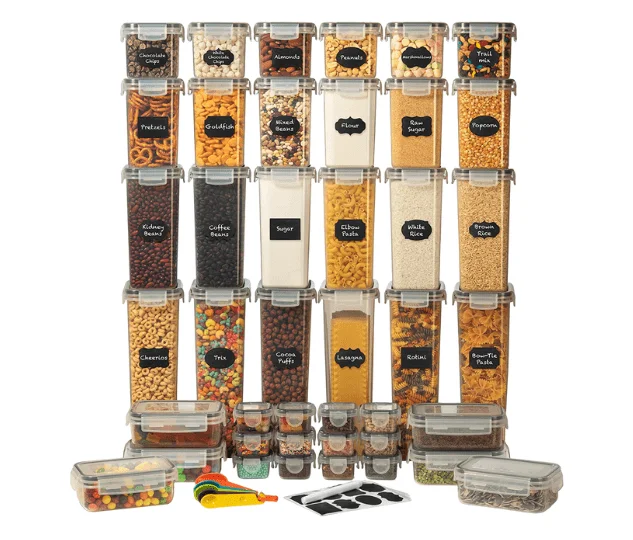
Invest in clear storage containers
- Clear storage containers in standardized sizes are a must-have. Opt for containers with lids in small, medium, and large capacities to neatly store everything from spices to dry bulk goods.
- Clear acrylic canisters allow you to instantly see contents without opening multiple containers. Standardized sizing creates uniformity on shelves for a streamlined look.
Acquire matching containers in different sizes
Matching your new storage containers provides visual consistency. Try buying multiple canisters or bins of the same type in different sizes. Use a small one for spices, a medium one for baking, and a large one for flour and sugar. This is very helpful for Kitchen Organization for Beginners.
Install shelf dividers
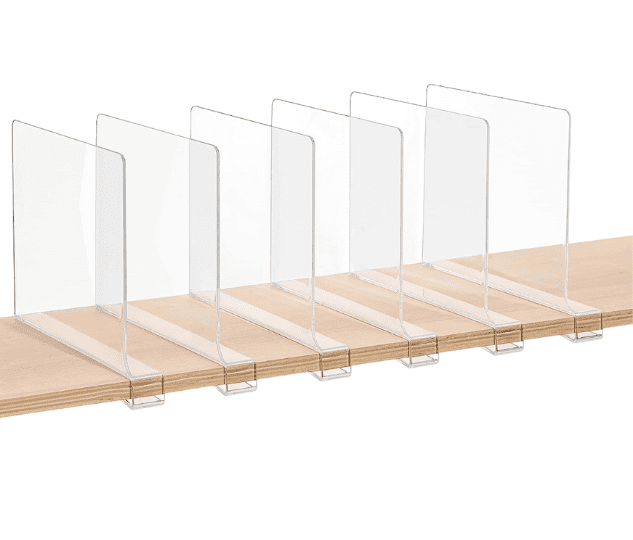
Shelf dividers create dedicated areas for easy separation by putting even shelves filled with an assortment of kitchen wares like plates, cups, and pans in quick order so items don’t end up in disorganized piles.
Get drawer organizers
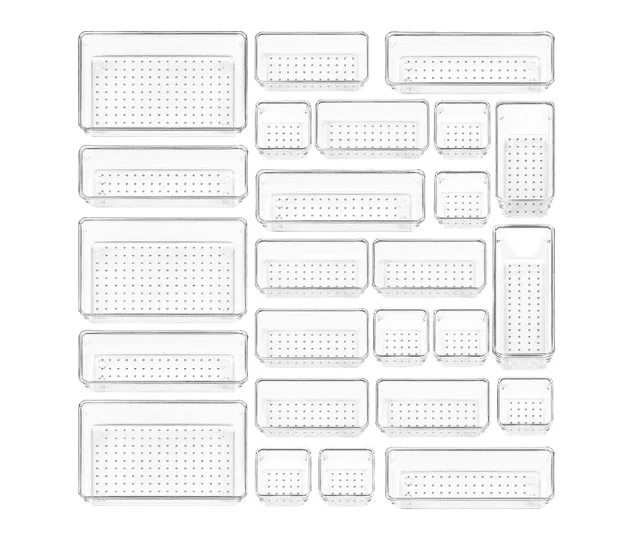
Drawer organizers quickly tidy up the messiest drawer filled with loose utensils, towels, manuals, and more. Designate spaces for gadgets, wooden spoons, measuring tools, and other cooking must-haves so they’re not jumbled together in a drawer.
Establish Intuitive Kitchen Zones
This lets you group similar items in surrounding areas of the kitchen, along with your new matching containers and organizers.
Keep cooking tools near the stove
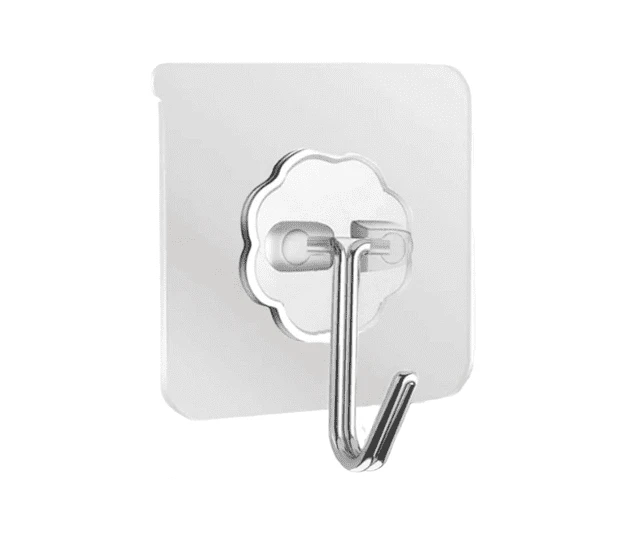
Keep cooking tools like pot holders, wooden spoons, and spatulas near the stove for easy access while cooking. Position a utensil crock or canister for must-have tools on the counter or install hooks for hanging essentials.
Position dishes/glasses near the sink
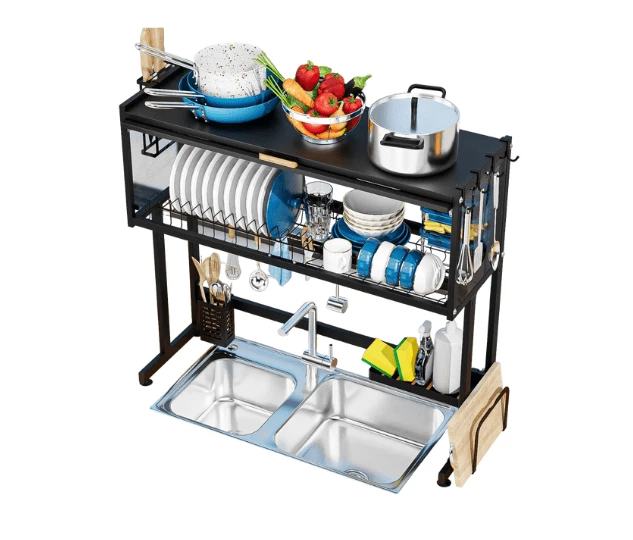
Situate dishes, cups, and glasses near the kitchen sink for seamless unloading after washing. A dish drying rack with storage for cleaned items helps complete the workflow.
Have food staples by prep space
Storing food items like flour, sugar, and cooking oil according to 3 to 4 days’ use near your main food preparation area will save you running around to get the main ingredients while cooking limited use The kitchen stand will not look too full by keeping the according food items.
Place utensils near the prep area or island
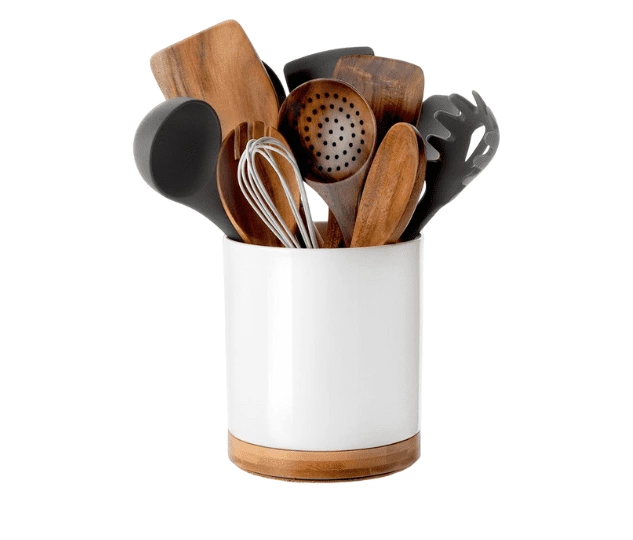
Ensure utensils have a home near your prep space or island. A countertop utensil crock allows you to easily grab tools while chopping veggies or mixing batter.
Under-sink storage
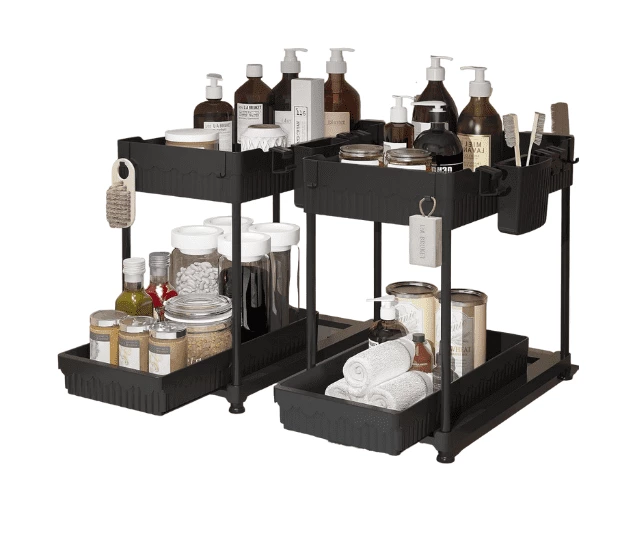
Under-sink storage is a great way to store cleaning supplies, garbage bags, and other items that you don’t use daily. There are many different types of under-sink storage solutions available, so you can find one that fits your needs.
Maximize Convenience with Labels
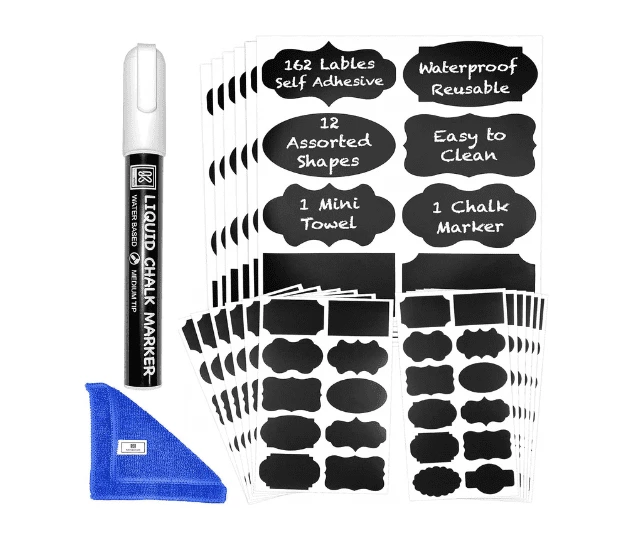
Use labels on shelves
Liberal use of labels takes the guesswork out of kitchen organization, making ingredients and tools easy to return to their designated homes.
Adhere removable vinyl labels on upper cabinets and deep pantry shelves to identify categories or contents. Seeing a label that says “Canned Goods” or “Baking Supplies” makes finding what you need a cinch.
Label containers by type or food group
On storage containers, attach labels listing contents like “Rice”, “Oats”, or “Pasta”. Identifying contents without opening eliminates the search through every container.
Consider chalkboard labels
For reusable options, use chalkboard labels and chalk markers on clear bins. Jot down contents, then simply wipe and rewrite as items shift.
Finally, add labels to drawers, shelves, and cabinets so family members or guests can quickly find what they need.
Embrace the Convenience of an Organized Kitchen
An organized kitchen not only looks great, but it makes cooking far more convenient, efficient, and enjoyable. Ditch the chaos, and implement these beginner organization tips for a kitchen that works for you.
Start by investing in quality clear storage bins in standardized shapes and sizes. Group items intuitively into zones for smooth food prep workflows. Utilize labels liberally so everything has a clear home.
With some initial effort, basic supplies, and zone planning, you can create a tidy kitchen that simplifies meal prep. Enjoy the convenience that comes with an organized cooking space.
Metal Kitchen Pantry Storage Cabinet with DIY Pegboard Wall
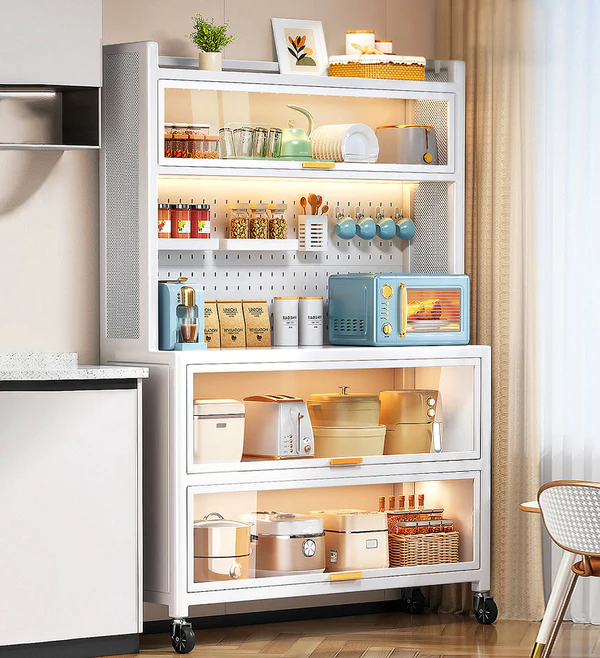
If you have space in the kitchen then you can use the kitchen pantry storage cabinet. With its help, you get extra working space in the kitchen and a good facility to keep kitchen tools and medium size appliances.
Stay on Top of Your Kitchen Needs with a Handy Notebook
It has been seen many times that we tend to bring expired or expired food items while working, which means that we don’t have the necessary items when we need them for cooking. To avoid this, keep a notebook in your kitchen to write down which cooking ingredients are running low.
Additionally, on the last page of this notebook, write down the necessary items and appliances in your kitchen that you are thinking of getting now. This way, when the time comes for deals and offers, you will not have to rack your brain trying to remember what you were thinking of getting.
It is Important to Consider the Following Factors to Kitchen Organization for Beginners :
- The size and layout of your kitchen: Make sure that the storage solutions you choose are the right size for your kitchen and that they fit in the space you have available.
- The type of items you need to store: Consider what items you need to store and how often you use them. This will help you choose storage solutions that are the right size and that make sense for your needs.
- Your budget: Storage solutions can range in price from very affordable to quite expensive. Choose storage solutions that fit your budget and your needs.
Conclusion: Kitchen Organization for Beginners
Getting organized doesn’t have to be a monumental task, especially for kitchen beginners. Start small by picking up storage essentials like clear containers, dividers, and organizers. Use these tools to impose order through an intuitive zone system and liberal labeling. Group like items together in designated areas and label everything clearly. With these simple starter tips, anyone can transform even the most chaotic kitchen into a tidy and efficient workspace. Embrace the convenience and enjoyment that comes with an organized cooking area.
Let me know if you would like me to modify or expand the conclusion in any way. I’m happy to refine it further too effectively wrap up the article. The key points I wanted to drive home are:
- The organization doesn’t have to be hard
- Begin with essential storage items
- Implement zones and labeling
- Small efforts make a big difference
- Benefits of an organized kitchen
FAQs
Where should I start when organizing my kitchen?
- Clear the counters: Remove everything from your countertops and clean them off. This will give you a blank slate to work with for your new organizational systems.
- Clean out the cabinets: Take everything out of your upper and lower cabinets and drawers. Get rid of expired food and donate or recycle any duplicate dishes or unused kitchenware.
- Sort through your utensils: Toss any damaged or unused utensils. Invest in drawer organizers or a countertop utensil crock to neatly arrange the ones you use most.
- Take stock of your pantry: Donate unopened non-perishable food that you won’t use. Set up matching storage bins to contain like ingredients and label bins clearly.
- Declutter appliances: If you have appliance clutter on your counters, store extras in a cabinet, like a toaster oven or microwave. Clean the fridge top and wipe down the fronts.
- Install storage add-ons: Add drawer dividers, over-the-cabinet bins, hook racks, back-of-door storage, and other organizational products.
- Design zones: Plan where your food prep, cooking, cleaning, and dining zones will be located in the kitchen.
Start with a blank slate by clearing surfaces and decluttering. Then optimize cabinets and drawers before adding storage solutions. Finally, map out zones based on your kitchen workflow. Target areas one by one for an organized space! This will help you with Kitchen Organization for Beginners.
Read More:
- 2023’s Best Smart Kitchen Appliances as Wedding Gifts for the Busy Bride | Laziest Person
- Best 14 Automatic Trash Cans with Lids
- Best Garlic Presses and Mincers in Different Designs and Shapes for 2023: Reviews and Buyer’s Guide
- 14 Best Different Types of Sifter | Strainer | Colander Kitchen Tools
- Exploring the 70+ World of Plastic and Hard Rubber Kitchen Tools

Hello friends! My name is Saurabh Chandwar and I am an IT professional as well as a businessman, that’s why I know very well about the interiors and exteriors of the house and based on that knowledge I post articles on the website so that my experiences can help others.



One thought on “The Best Complete Guide to Kitchen Organization for Beginners in 2023”